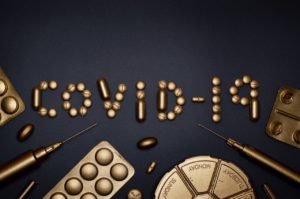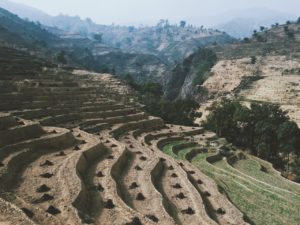Waste management in developing countries
In Ankara, Turkey about USD 50,000/day is yield by selling 50% of recyclable wastes to middlemen. In Quezon, Philippines only 33% of the total annual waste generated is reused. In Thailand, only 20% of the municipalities operate sludge treatment plants. The left out untreated sludge used in agriculture & discharged into surface water exposes farmers and consumers to health risks.
However, small profit but the relentless effort required to collect, separate and transform organic waste has handicapped the waste treatment. Higher transport costs, subsidies for chemical fertilizers, competitive fertilizer market, lack of framework for the sale of biogas or its secondary products (electricity, heat) are the potential hindrances. Long-distance between sludge producers and users of treated sludge has reduced the economic viability of faecal sludge (FS) management.
Waste treatment by black soldier fly larvae
The black soldier fly, Hermetia illucens L. (Diptera: Stratiomyidae) is widespread in tropical and warmer temperate regions. Its voracious larvae feed on organic material while the pre-pupa migrates in dry sites for pupation. The adult emerges after 14 days and mates after 2 days. However, food shortage & low temperature extends the larval stage up to 4 months. During its adult stage, the fly does not feed and depends solely on fat reserve. Hence, it is not the vector of diseases. It is reported that 65-75% of household waste can be reduced in comparison to 40% of reduction values in the laboratory. In addition, pre-pupae grown on municipal organic waste weighed 195-220 mg while 157 mg in the laboratory.

The 50:50 ratio of faecal sludge to market waste results to be a good combination for pre-pupal biomass production and efficient waste reduction.
| Feed source | Feeding rate | Development time | Prepupal dry weight | Dry weight reduction of feed |
| mg/larva/day | Days | mg | Percent | |
| Chicken feed | 25 | 32.7 | 39.1 (3.3) | 37.3 (0.9) |
| Chicken feed | 100 | 16.6 | 48.0 (3.5) | 41.8 (1.1) |
| Chicken feed | 200 | 15.9 | 63.3 (11.0) | 26.2 (2.4) |
| Faecal sludge (FS) | 167 | 27.0 | 18.1 (0.6) | 54.7 (1.3) |
| FS:MW = 1:1 | 167 | 18.0 | 38.7 (0.6) | 66.6 (0.8) |
| MW | 167 | 18.0 | 59.9 (3.4) | 59.4 (0.6) |
| MOW | 507 | n.a. | 83.5 (6.9) | 68.0 (3.4) |
However, bio-accumulation of heavy metals like Zn, Cd, Pb results in decreased body mass, reproduction and lifespan. A well-designed drainage system (better aeration) and appropriate feeding (chopped food, small quantities with high loading frequency) lead to a steady treatment process. The biological stability can be ensured after composting/ vermicomposting before its application.
Products
At the pre-pupae stage, they exhibit 36-48% protein & 31-33% fat. The higher nutrient concentration serves as an alternative source to expensive fishmeal and fish oil. Currently, fish-based products contribute 24% for pigs, 22% for poultry and 46% for aquaculture. Similarly, the cuticular chitin is composed of 6.9% nitrogen in comparison to synthetic cellulose with 1.25% nitrogen. This adds to the high chelating value in medicine, cosmetics and biotechnology. To yield a higher price and facilitate feed formulation, protein, fat, chitin can be fractioned and sold.
Reference to original paper
Diener, Stefan & Zurbrügg, Christian & Roa-Gutiérrez, Floria & Hong Dang, Nguyen & Morel, Antoine & Koottatep, Thammarat & Tockner, Klement. (2011). Black soldier fly larvae for organic waste treatment – prospects and constraints.








